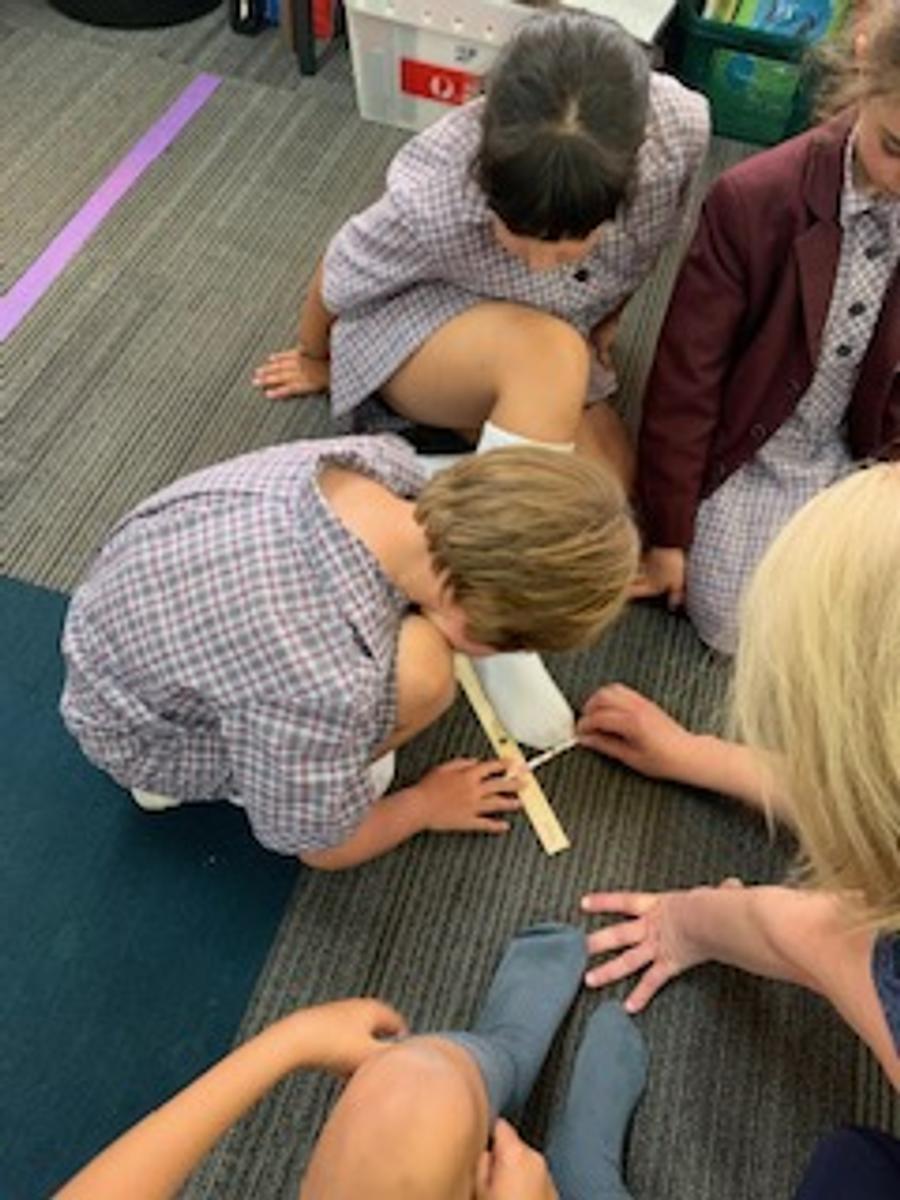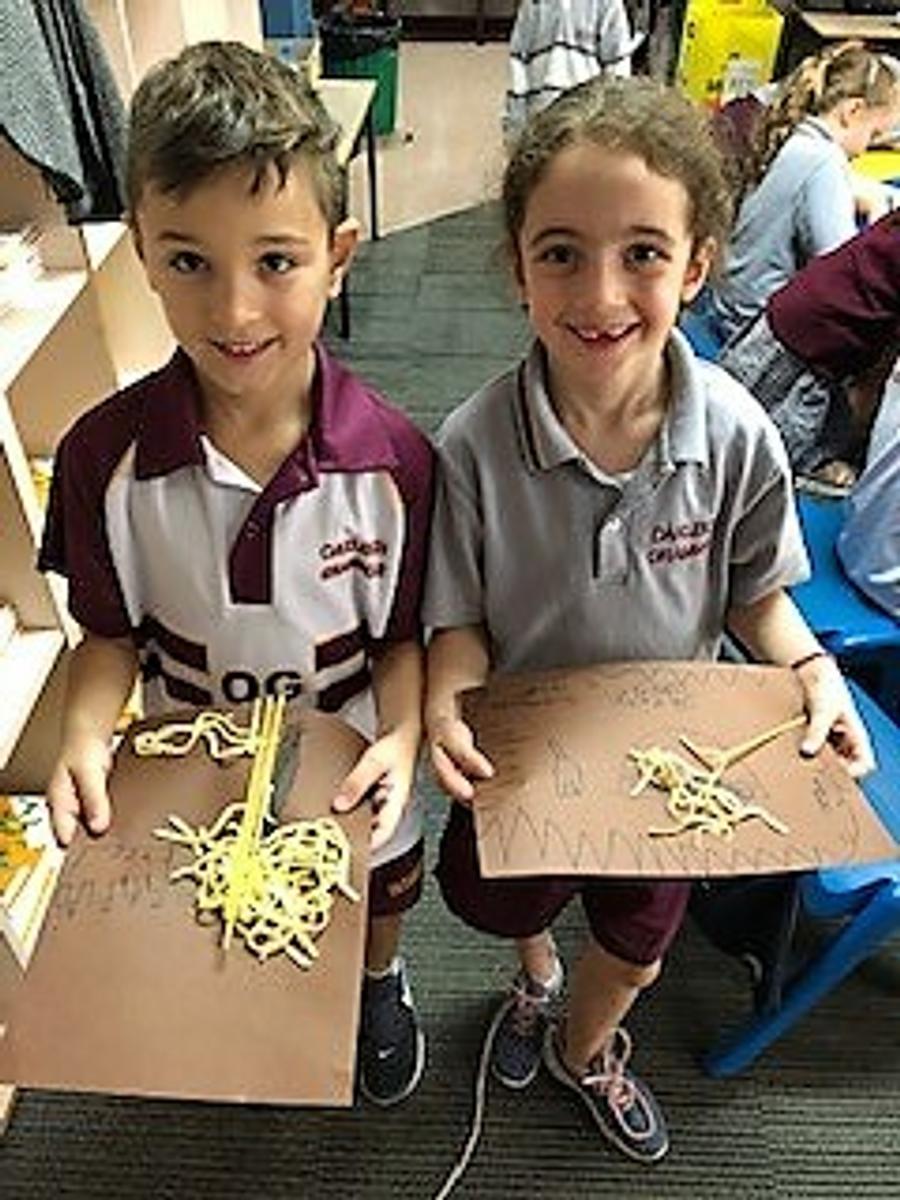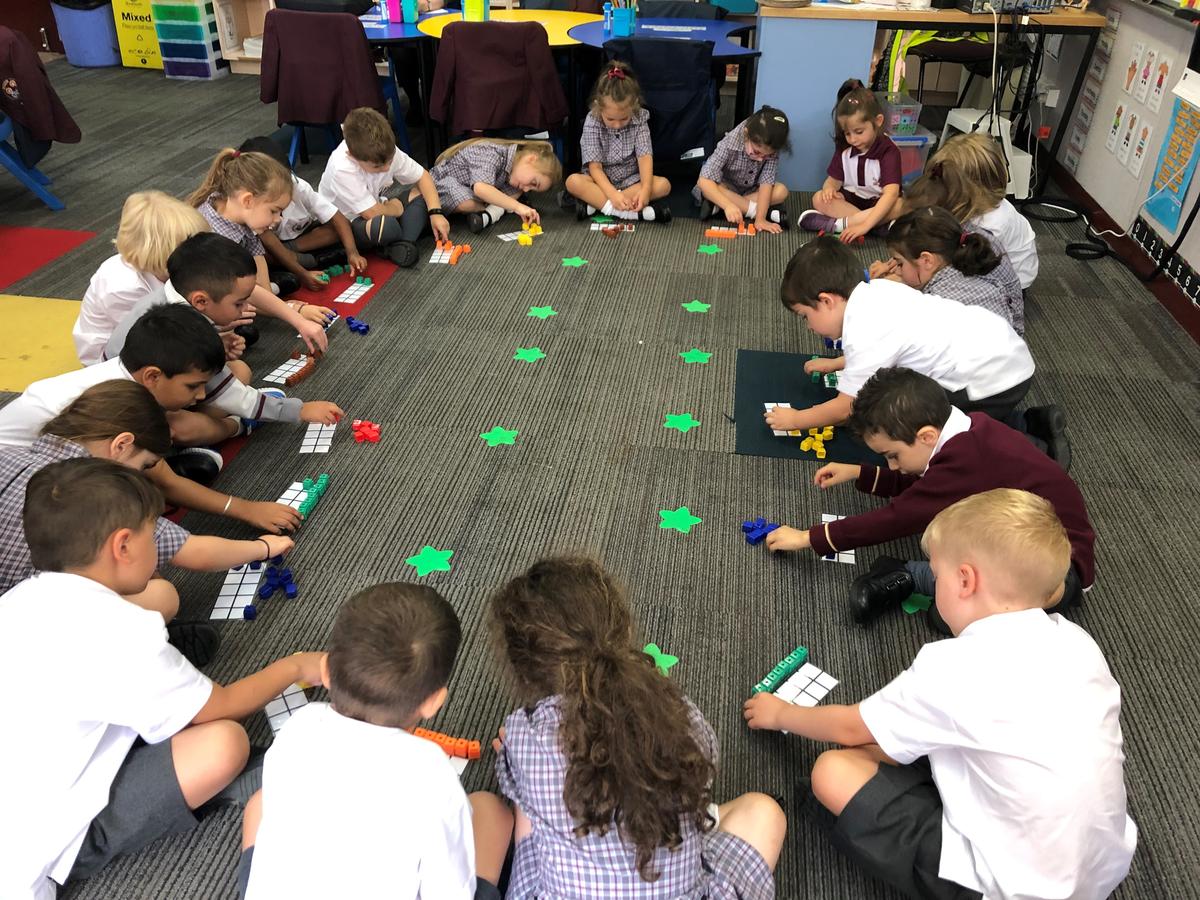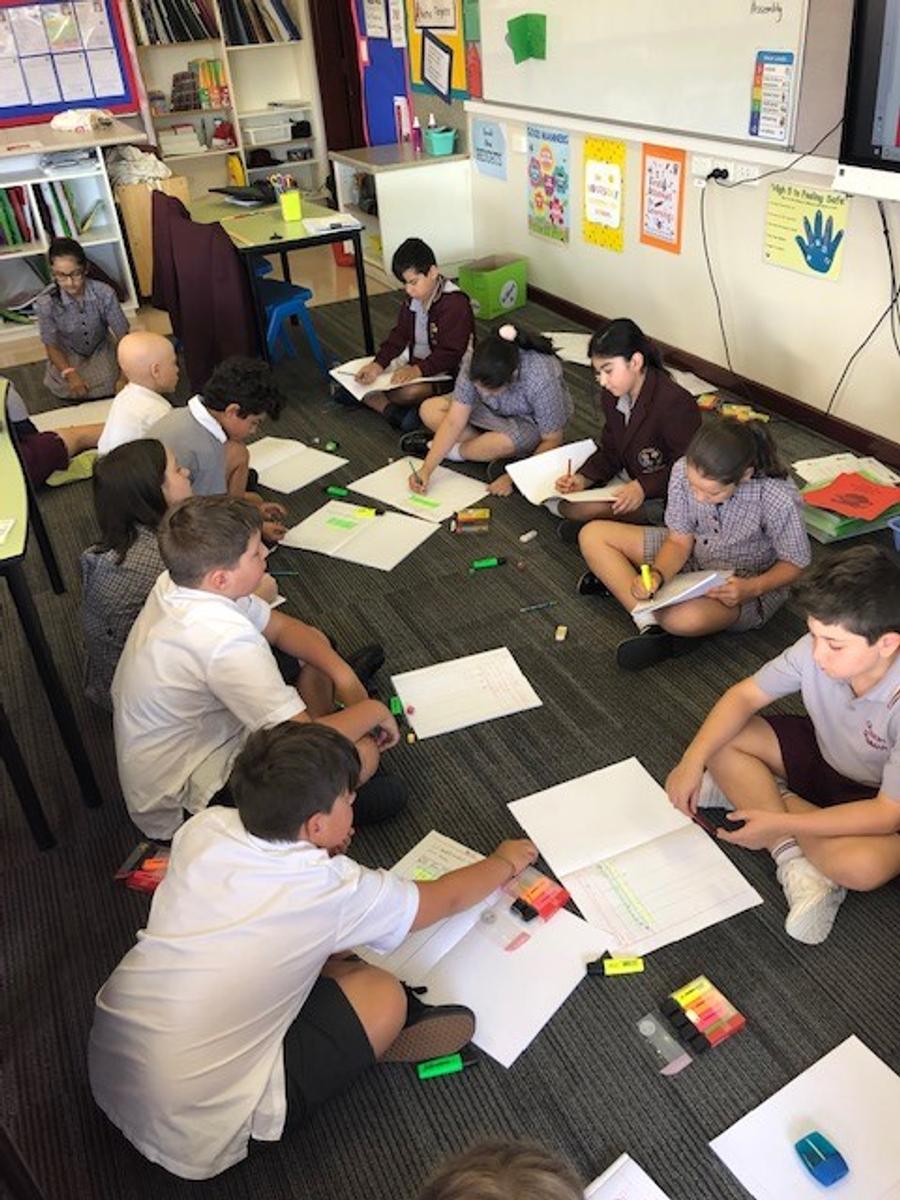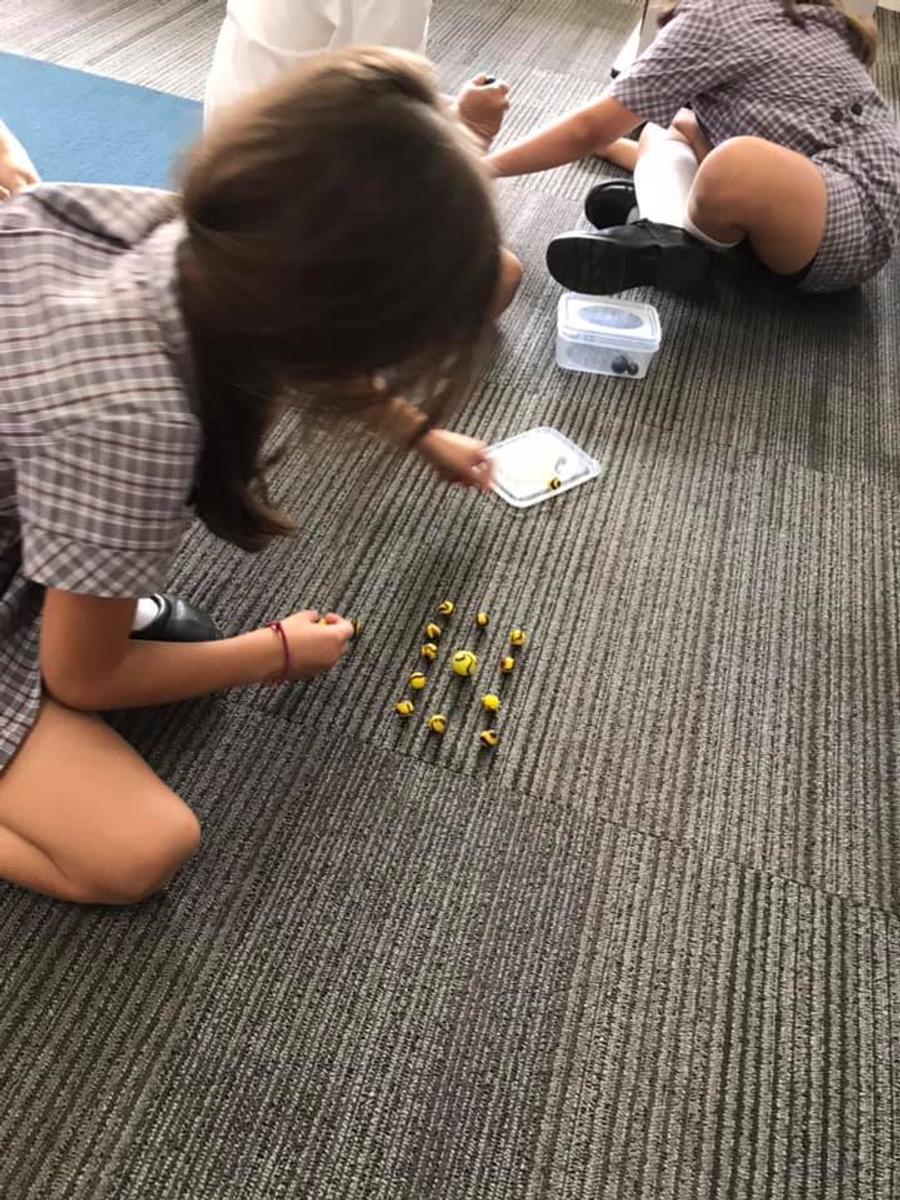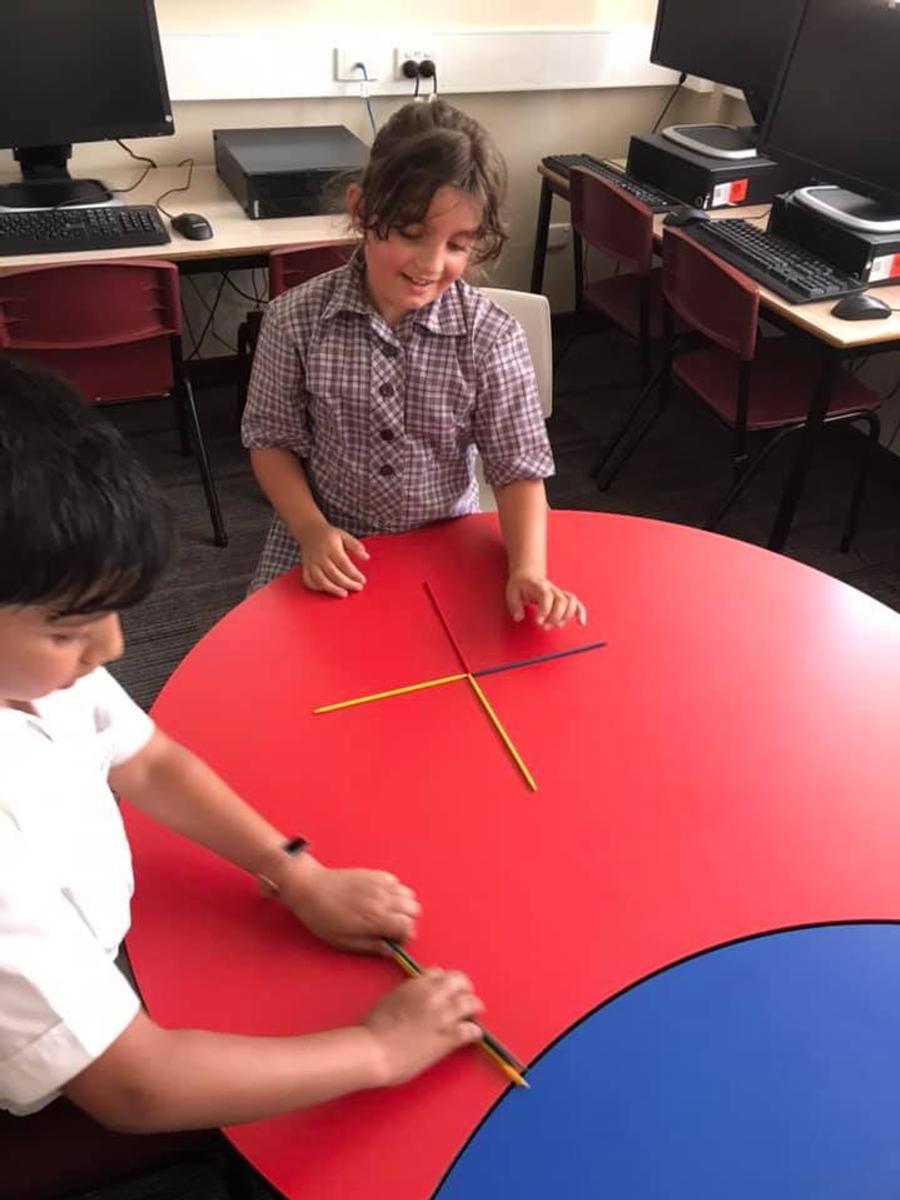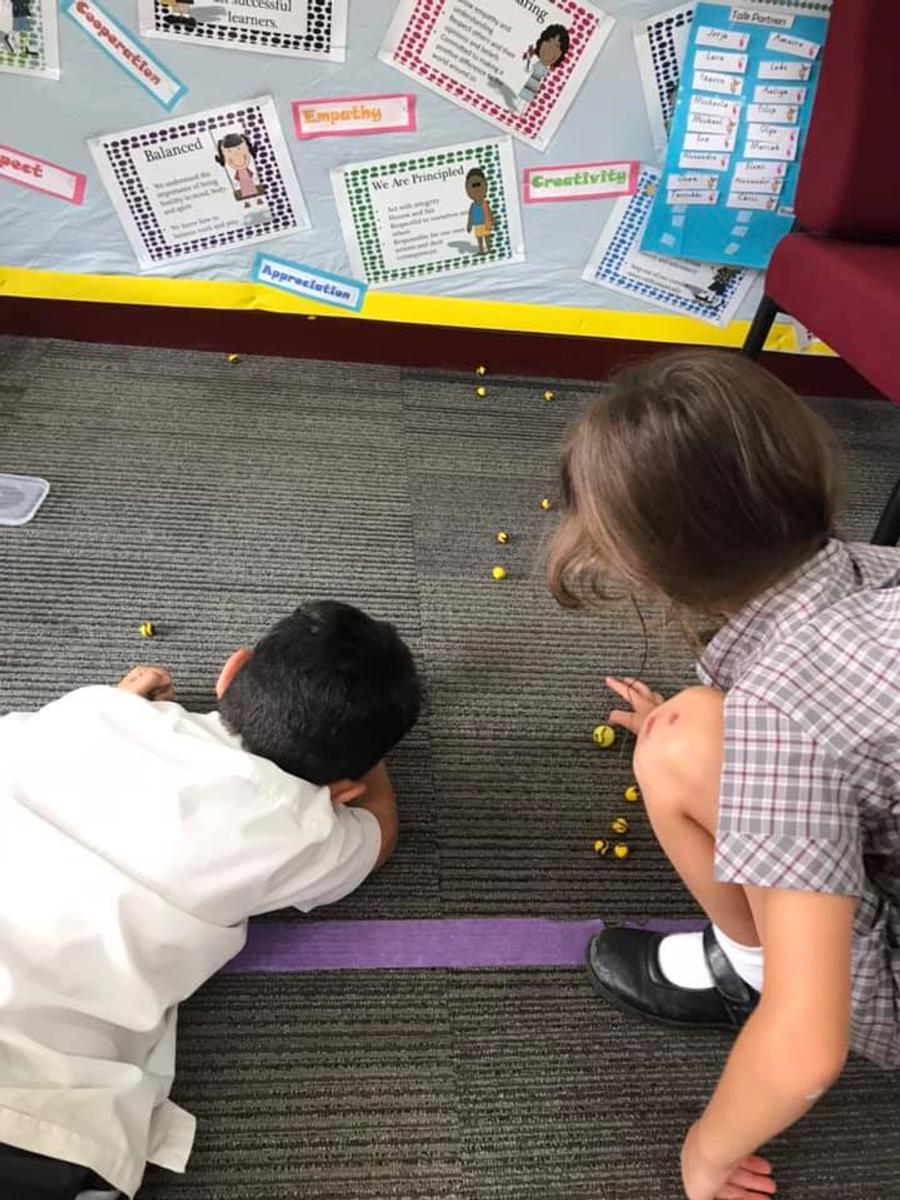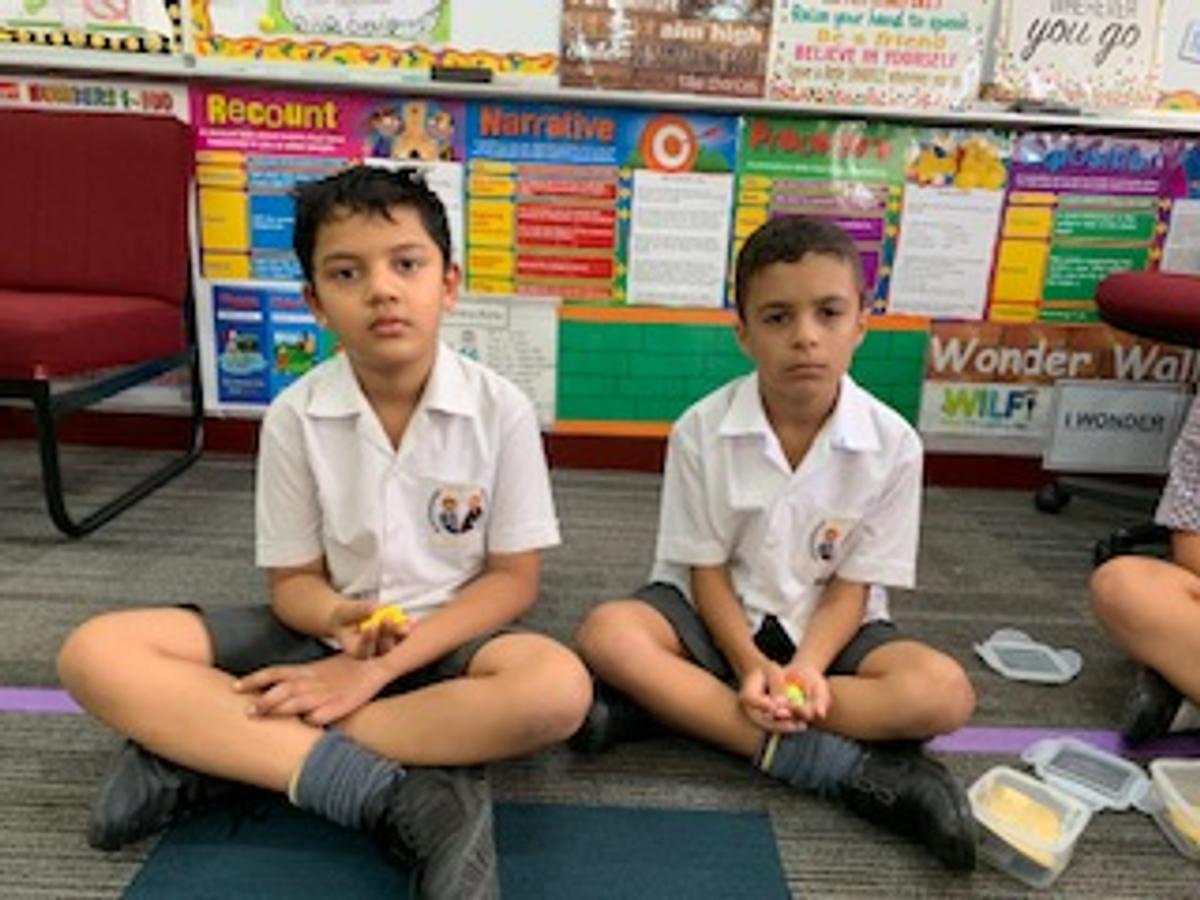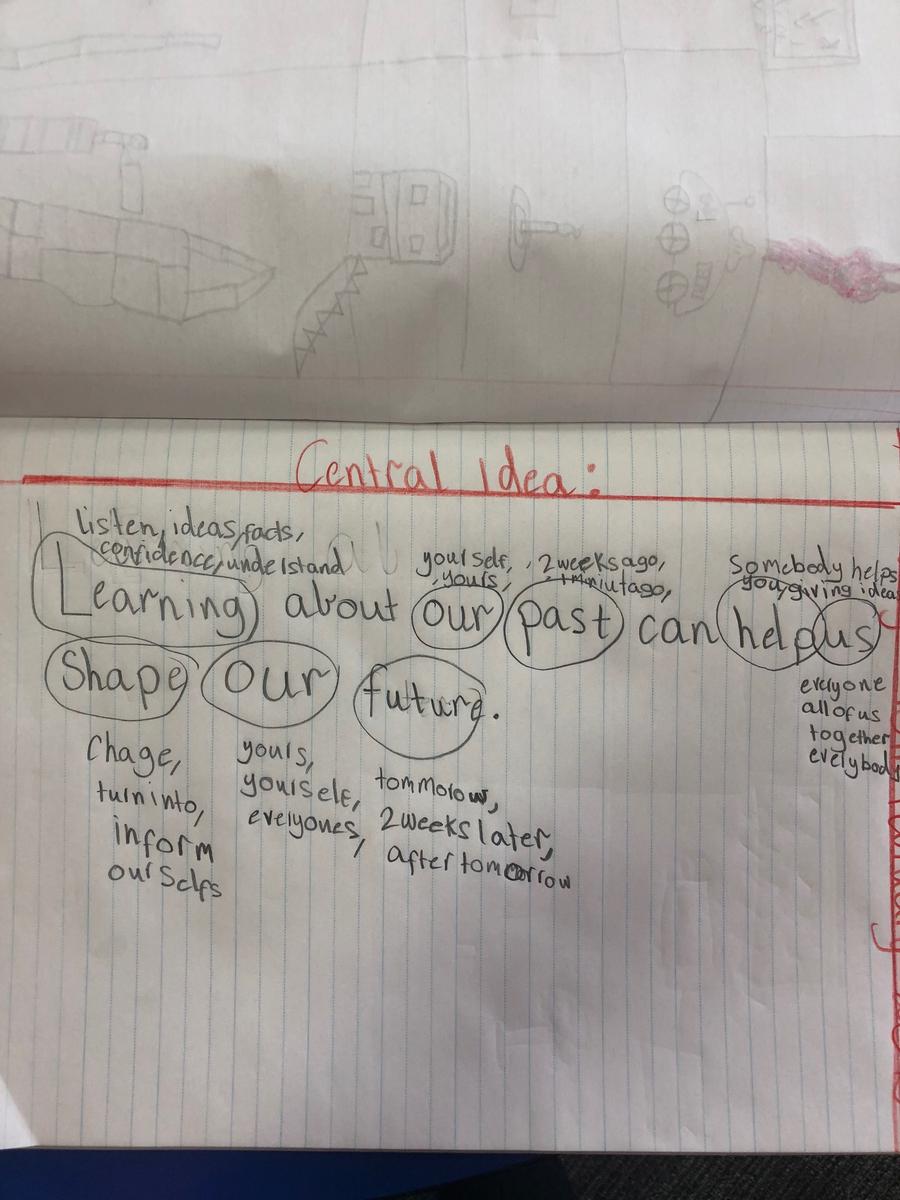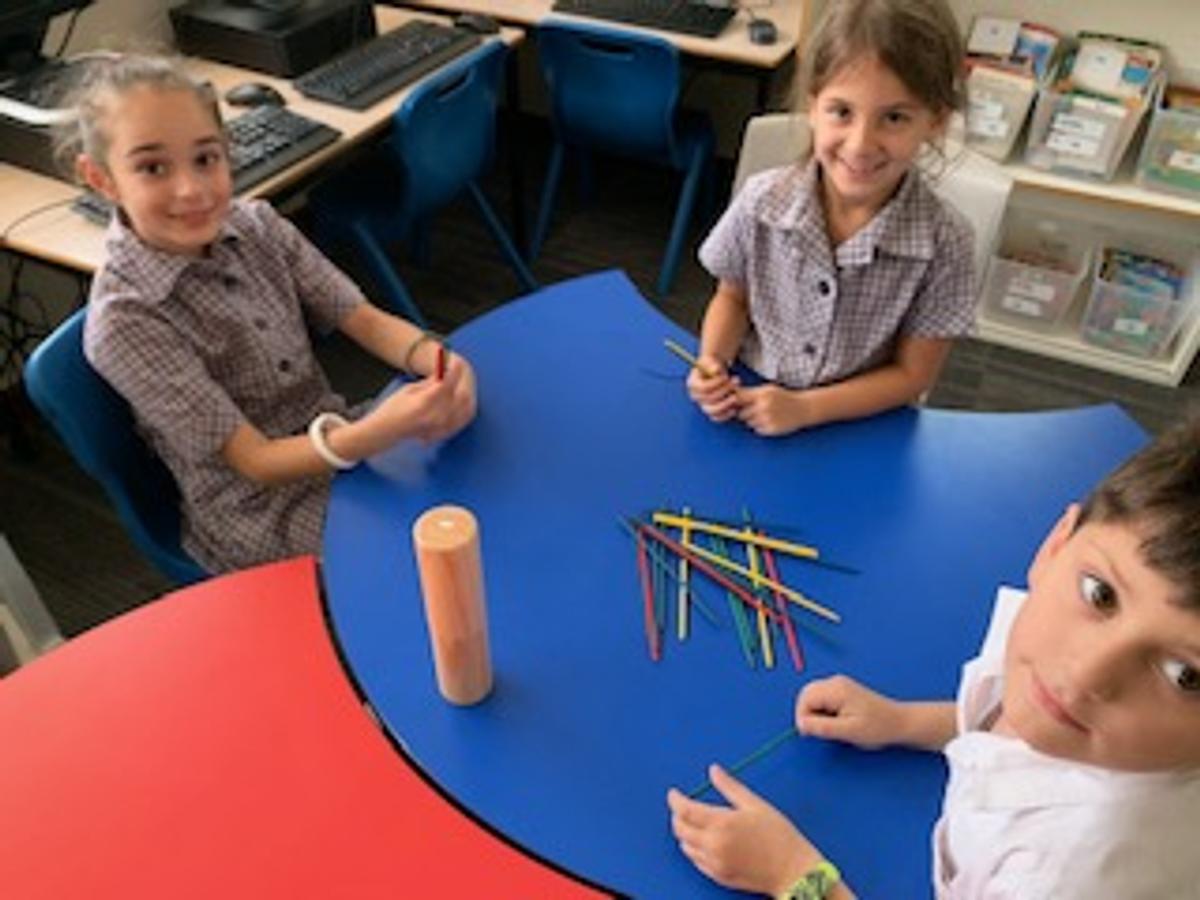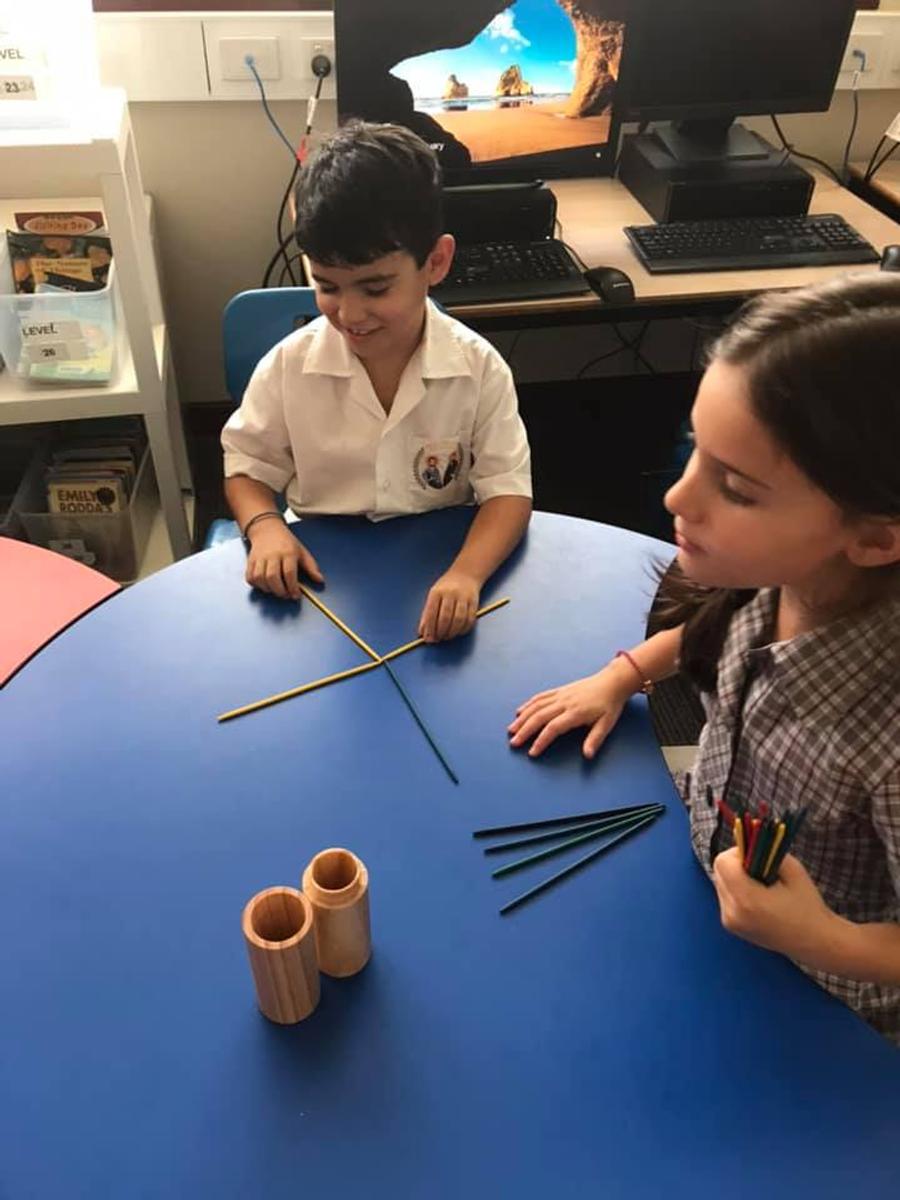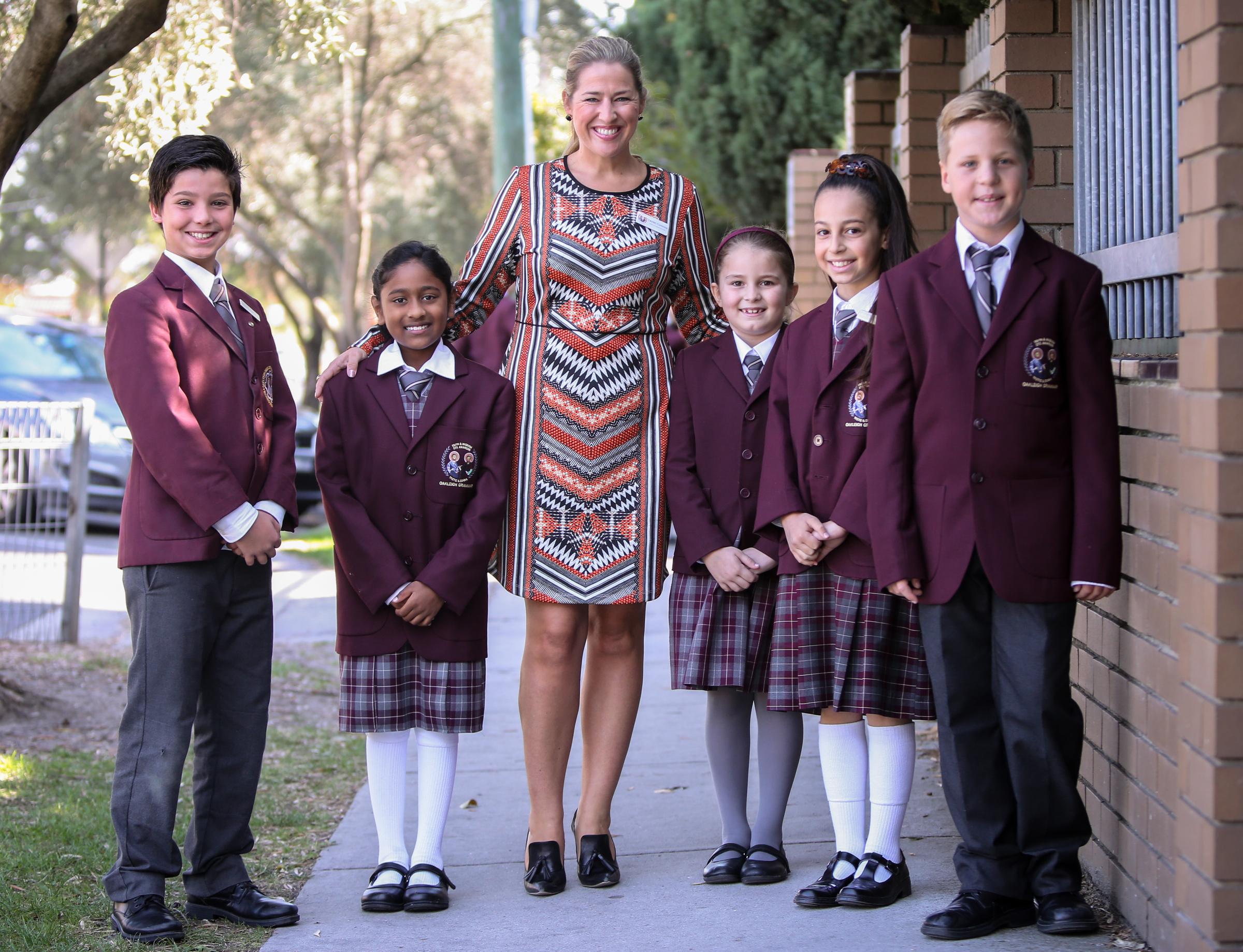
Junior School
SARAH CAFFREY
Junior School Head of Teaching and Learning
A very warm welcome back to School as we embark on another learning journey together. Our Junior School classrooms are certainly buzzing with anticipation, excitement and challenges as our students engage in new learning. As teachers at Oakleigh Grammar we strive to model our own love of learning, and are always delighted when we learn something new with our students or from our students! As parents and care givers, modelling how learning opportunities are all around us in every aspect of our lives is a great way to build a healthy love of learning and curiosity in your child. Here are some advice and tips from the Victorian Education Department to engage your child in numeracy learning:
Early Learning - Year 2
Maths is everywhere – in the playground, at the shops and at home. Maths includes noticing numbers, shapes, patterns, size, time and measurement. Incorporating maths into everyday experiences is easy and fun. You may feel the maths your child is doing at school is different from how you were taught, but you can still support your child in many ways. Make connections for your child by explaining how numbers and counting are a part of everyday life.
- Use specific terms when asking for items. For example, ask your child to get the ‘one litre’ milk bottle from the fridge, or the ‘one kilo’ bag of flour from the cupboard.
- When cooking, talk about different measurements used, such as teaspoons, millilitres, litres, and cups. Discuss ideas about empty and full.
- Sorting activities support your child to understand concepts such as ‘same’ and ‘different’. Use recycling as an opportunity to sort items to place in the rubbish. For example, paper, plastic, food waste and general waste.
- Once your child is confident, use different numbers as the starting point for practicing counting. For example, start counting from 6 or 10. Ask your child to count forwards and backwards. Ask what number comes before, or what number comes after, a given number.
- Cut fruit into six pieces and ask your child to count the pieces.
- Count the pieces of toast you cooked at breakfast.
- Add the total number of cutlery items at the table.
- Count the number of people travelling in the car or on the bus.
- Count the number of houses as you walk along the street.
- Count how many steps it takes to walk from the kitchen to the bathroom.
- Practice counting when grocery shopping with your child (for example, counting the number of apples you put into the bag).
- Name and notice the similarities and differences between shapes. For example, shapes with curves, corners or edges.
- Help your child draw shapes, cut them out and sort them into groups. Ask your child to explain why they have sorted the shapes this way.
- Use cookie cutters to explore different shapes using play dough. Encourage your child to identify shapes in their everyday life, such as a round ball, square window or hexagonal ‘STOP’ sign.
- Use a wall measuring chart to measure the height of people in your family.
- Talk to your child about objects around them and help them judge which is bigger or smaller, taller or shorter.
- Cut a piece of string for your child – any length will do. Use the string to measure the objects in your house to find out what is longer or shorter than your ‘string measuring tape’. Ask your child to identify anything that is the same length.
- Explore other ways of measuring, such as using a cup, jug, teaspoon, icy pole sticks, footprints or hand lengths.
Year 3 - Year 5
Providing opportunities to discuss and engage in mathematics supports your child’s learning in and out of school. Your child will also begin to connect the importance of maths with their everyday activities, such as navigating public transport, comparing and choosing the best item to buy in stores, setting a budget, and cooking. Talk positively about maths so your child also values it.
If your experiences in maths at school were less than ideal, avoid making comments like “I was bad at maths at school,” or “I didn’t like maths because it was too hard.” Comments like these can lower your child’s expectations of themselves, and can perpetuate myths about people being naturally bad or good at maths. Conversely, if you did well at maths in school, avoid jumping in with answers or solutions. Encourage your child to talk about how they might work out maths problems. This helps boost their confidence and deepens their understanding. Here are some questions to ask your child when watching or playing their favourite sport:
- How does your favourite sport tally the score?
- What maths is presented on the tally?
- How do other sports tally the score – for example, tennis, golf, cricket, netball, football?
- What maths do you use to find the total of the scores?
- Who is at the top of the ladder? How is this determined?
- Are there other ways to record the score?
- How long do your favourite sport games go for in minutes and seconds? How is the time in the game divided? Into halves, quarters or something else?
Because it changes daily, the weather can be a great topic to discuss maths with your child. Try these activities: Visit the website -http://www.bom.gov.au/vic/
- Ask your child the difference between each day’s minimum and maximum temperatures. Do they notice a pattern or trend in the weather changes?
- Find a seven-day forecast, then record the actual temperature for each day and compare.
- Ask your child if the forecast was accurate.
- Ask them what similarities and differences they notice.
Recipes and Cooking
- Collect and read recipes and discuss the use of fractions, millilitres and grams. Encourage your child to make accurate measurements using measuring cups and spoons.
- Discuss how you would double or halve a recipe. Encourage your child to record new measurements for the recipe. Discuss why and when you might need to do this.
- Identify the temperature and cooking time on the recipe. Discuss why different recipes have different temperatures and cooking times.
- Estimate the cost to buy all the ingredients to make the recipe. Compare this with the actual cost of items. Ask your child if they think it was cheaper to buy the ingredients and make dinner or get takeaway
Travel and Timetables
Here are some questions to ask your child that improve their knowledge of time and their problem solving skills:
- Can you identify your starting point on the timetable?
- What is the earliest and latest time to travel on this route?
- How long does it take to travel the entire route?
- How many stops are there on this route?
- What is the difference in the time travelled when not making all the stops?
- What is the cost? Is it good value compared to other travel options?
- Which is the best route to travel? Why do you think this?
- To get to training on time, when will you need to leave?
Handling Money
Encouraging your child to think about money, saving money, and considering how they spend money is very important. Here are
Inquiry Learning in Year 2
History: The Past in the Present
Central Idea: Learning about our past can help us shape our future.
Lines of inquiry: An inquiry into…
- Aspects of life over the last 100 years
- The changes and developments that have been made
- Sites of historical interest and significance of our local community
The students in Year 2 started off their inquiry unit with the provocation of olden days’ games. They were asked: What could these be? What were they used for? How many different ways can you play with it? What was it made out of? Why do you think it was made of wood?
Groups of students were given quoits, marbles, pick-up sticks and Jacks. The students then spent time exploring the materials and working in teams to come up with the rules for their game.
Student Reflections
Dean 2F – It was fun learning about marbles. They were made of glass so we had to be careful. Now toys aren’t made out of glass.
Athena 2P – I really liked playing quoits. It is really different to games I play.
Sophia 2P – Playing with Jacks was really fun. It was challenging, but good they were made from plastic. In the olden days they were made out of sheep bones and it was called Knuckles. In the olden days lots of children had to make their own toys and games.
Mia 2P – I didn’t know how to play pick-up sticks and marbles. It was fun discovering how to play and making up new rules to old games.




